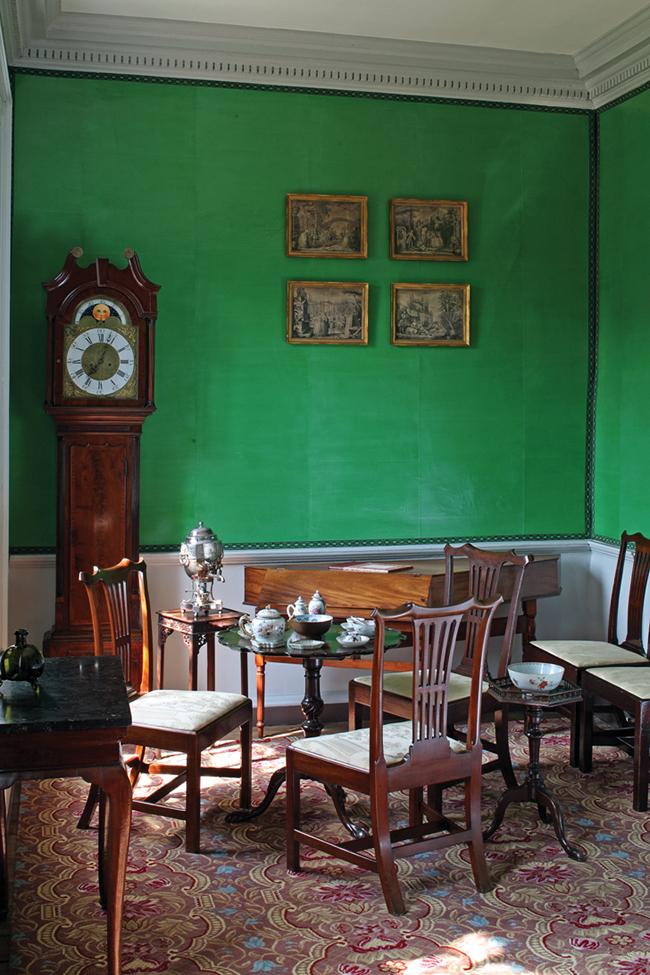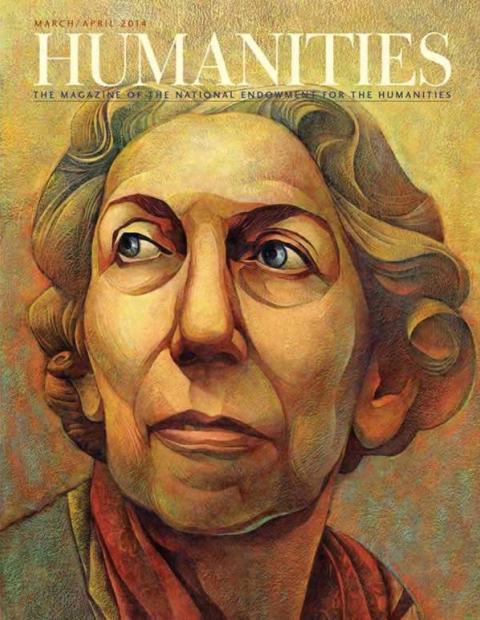It’s unlikely that when arriving in Alexandria, Virginia, in the 1740s from the bucolic, boisterous port of Whitehaven, England, John Carlyle would have been mulling over the “truth universally acknowledged” that opens Jane Austen’s Pride and Prejudice. (After all, Austen penned the masterpiece about a half century later.) But the local Virginia gentry knew the sentiment that a “single man in possession of a good fortune, must be in want of a wife.” The fact that the young and ambitious merchant’s representative, who was expert in the mercantile world of transatlantic trade, married the well-off Sarah Fairfax adds an American twist to the English novelist’s matrimonial formula.
The mansion that John and Sarah Carlyle moved into in 1753 was one of only a few stone structures in the port city at the time and is the only one remaining today from the era. Its Aquia sandstone façade, with its distinctive quoins, or cornerstones, and hipped roof that features handsome matching chimneys are these days an Old Town, Alexandria, landmark, but for over a century it was all hidden from view. In 1970, the Northern Virginia Regional Park Authority began a six-year renovation that included tearing down a Civil War–era hotel that fronted Fairfax Street and occupied Carlyle House’s front yard. Skirmishes over which to save eventually saw Carlyle House win out, and its renovation was completed about the time of the bicentennial celebration.
Through NEH-supported interpretation, visitors learn that the home took much longer than expected to build. A wall even collapsed before it was completed. The house carried with it, however, a message: The Georgian dwelling was in line with tastes among Virginia gentry, placing Carlyle squarely among the colonial elite. When General Edward Braddock convened the Governors’ Council at the house in 1755 to plan strategy and raise funds for the French and Indian War, the British officer was such a boorish, overbearing guest, and the governors were so uninspired by the thought of financing the king’s military actions that the earliest American resistance to the Crown can be traced directly to John and Sarah’s front parlor, where the meeting took place.
That lovely parlor is furnished with eighteenth-century pieces and equipped with a reproduction of a 1765 English Bentside spinet. Records show that John Carlyle purchased a verdigris wallpaper for the rest of the house in a nearby shop and returned for more. The parlor itself is done in a dazzling verditer similar to that found at George Washington’s Mount Vernon. The restoration is expert throughout, showing, in some cases, how colonials preferred mixing combinations of borders, papers, and printed textiles in ways that very much run counter to modern taste. Of particular interest is the Palladian-style window facing east and affording, in the Carlyles’ day but no longer, a view of the Potomac River (today it overlooks an English-style garden).
One of the Carlyles’ daughters took spinet lessons at Mount Vernon, and it’s in poignant memory of her and her talents (and the somewhat arduous journey all the way to George Washington’s mansion a good piece downriver) that the parlor features the delicate instrument. One of the rooms upstairs has been left only partially restored, revealing through cutaways in floor and ceiling the painstaking procedures involved in such historical undertakings. Another room is furnished as it possibly would have been, when one of the Carlyles’ sons (who died in 1781 at the Battle of Eutaw Springs) was a young man, with many of his possessions positioned as if they had only lately been touched by his hand.



